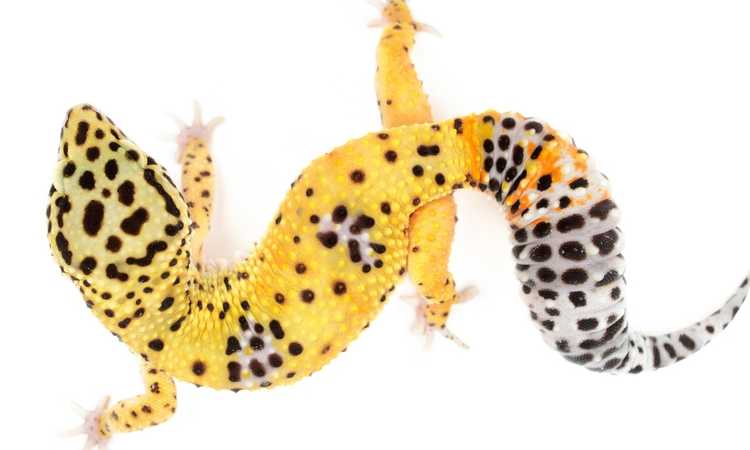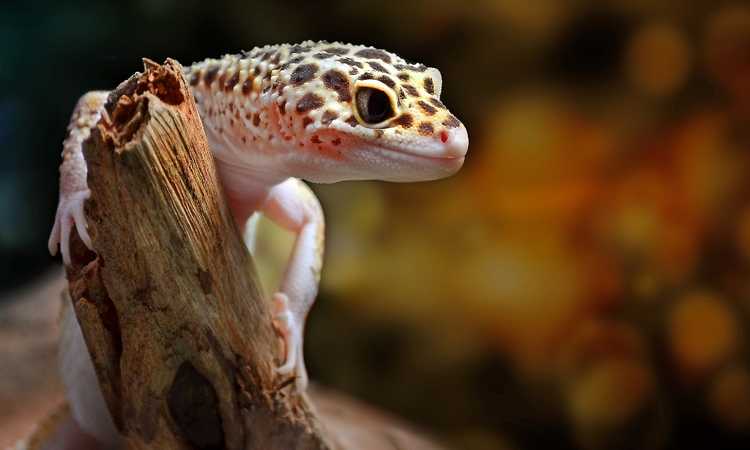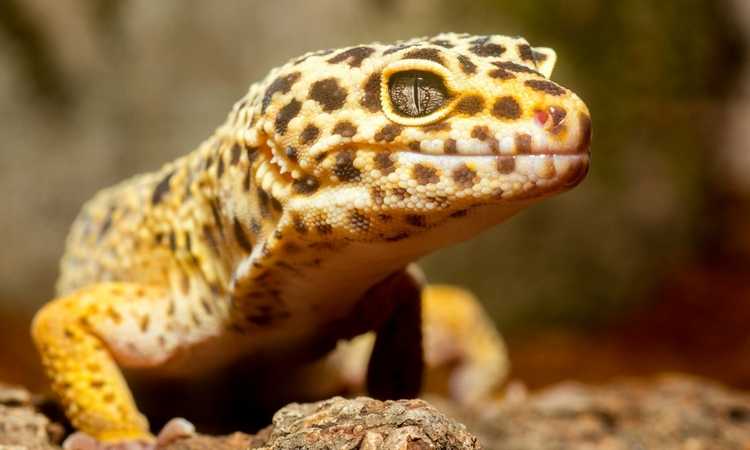Although your leopard gecko can live for 20 years or more, as a pet he cannot control what happens to him. Your pet should be happy, healthy, active, well-fed, and happy. Don’t worry. Although it sounds overwhelming, once you know how to keep your leopard gecko healthy, it’s easily manageable.
Imagine a Healthy Leopard Gecko
Sometimes your gecko might be sick, injured or have a parasite. If you don’t see a picture of a healthy gecko, it will be difficult to determine if there is something wrong. Before we get into the possible health issues that can befall your gecko, let’s look at a healthy one.

Weigh your gecko with your hand
Healthy geckos feel heavier than they actually are. The gecko should feel strong in your hand. Even if he is calm, he should feel strong enough to fight against you. These indicators are vital for a healthy gecko.
A scale that measures small items in grams can be used to weigh your gecko and keep him weighed.
Feeling the skin contours
The bumpy skin at the top of the body has little granular scales covering it. The skin on the bottom of the body is smooth. The tail is swollen and ringed. Gently rub your hands on your gecko’s body to feel for lumps and bumps. The body contours are uniform and symmetrical.
When handling the tail, be gentle and careful. If he feels threatened, a lizard may drop his tail.
Examining the feet, legs, and toes
Although your leopard gecko may look small, his legs are stronger than their body and can do the job that he requires. Although they are small, their muscles should be strong and have little bulges at the back and front legs. The bones of the legs should be straight.
To ensure that the gecko can walk on his bottoms, the wrists must be bent in the right way. The toes of the feet must be spread out. The tiny claws on each toe help him grip the ground when he runs or walks on it. Also, the bristles at the bottom of his feet assist.
Examining the Face
Many leopard geckos look like they’re smiling. Despite the fact that their faces are shaped and their mouths are large, I like to believe they are happy. My leopard geckos are especially happy!
His eyes are the most striking feature of a leopard gecko’s face. His eyes are large and almost too big for his face. The eyes are clean and well-fitted to the eyes. Clear and clean nostrils allow for easy and clear breathing. The jaws are also large and well-fitted, creating a clean line in the mouth. If the gecko is calm and relaxed, his ear holes can be either open or closed.
Read This: What Should I Feed My Leopard Gecko?
Understanding your gecko’s behavior
You should watch your gecko closely so you can observe his behavior. When he is more active in the evening and when he is hunting crickets, watch him closely. Watch him stalk the waxworms in his shallow saucer, crush them and then swallow them.
You should also be able to identify where your gecko sleeps during the night. You might find him sleeping in one spot at the warm end and another in a cooler area. Find out his usual habits.
Problem solving and prevention
It is not always easy to own a pet, especially if you have reptiles. Our pet is being kept in an unnatural environment, fed foods that he might not have eaten in nature, and handled. Sometimes, keeping reptiles as pets can cause problems. It can also prevent problems. Captives that are well cared for live longer than wild animals who have to deal with drought, floods, hunger, and predators. There is a balance. While we cannot do anything for wild geckos, we can make it easier for our pets.
Keep an eye out
It’s important to be alert for any changes in your gecko’s body. Knowing what your gecko feels like can help you spot changes in his body. You will notice a bump underneath his skin if you pick him up.
You can get clues about your gecko’s health by watching for changes in behavior. You can tell if your gecko is having a different sleeping pattern by noticing that he’s shifting between the two areas of his cage during daytime.
Changes are inevitable for a reason, good or not. Knowing what normal can help you identify those changes.

How to get rid of parasites
The good news is that leopard geckos aren’t susceptible to parasites either internally or externally. Because they have been kept in captivity for so long, parasites are virtually non-existent. Sometimes, however, a problem can arise.
Mites
The mites are small, red, brown or black bugs that look almost like tiny specks. They can be found on your gecko’s furniture, the substrate, or even on your lizard. A new reptile can introduce mites, especially if it was living in dirty or overcrowded conditions.
Before introducing any new reptiles, such as leopard geckos and others, to your pets’ existing pets, it is important to quarantine them for at least one month. This will reduce the transmission of diseases and parasites.
Bad mite infestations can cause blood loss due to repeated bites by the mites, anemia, and ultimately death. Although they may seem small, mites can quickly reproduce and overwhelm reptiles.
To get rid of mites, you can gently wash your reptile using soapy water. Use a mild soap to make suds. Next, gently soap your gecko. You can rinse him off with water, removing all soap.
Next, clean the old cage thoroughly with a bleach solution. Use the bleach solution to wash the furnishings and the cage. Scrub all corners, cracks, and crevices of the cage and furnishings. After everything has been scrubbed, rinse it off until the bleach smell disappears. Set the cage back up by putting in new substrate. This may need to be done two or three more times in the coming weeks until the mites disappear completely.
Coccidia
Coccidia, a protozoan parasite that lives in the intestinal tract of leopard geckos, are small protozoan parasites. Coccidia are small protozoan parasites that live in the intestinal tract of leopard geckos. Often, diarrhea is the first sign. Coccidia can quickly be passed from one gecko or another in a captive environment, as each gecko is exposed to the feces and urine of the other. The feces transmit this parasite to the gecko.
Coccidia can cause dehydration, anemia and secondary infections, which can lead to death if left untreated. To determine if coccidian is the problem, and to prescribe the appropriate medication, veterinary care is necessary.
The Web site of the Association of Reptilian and Amphibian Veterinarians (ARAV) can help you find a veterinarian who specializes in reptile medicine in your region.
Separate all affected leopard geckos and place them in their own cages, at least for the duration of treatment. Keep the cages clean and use paper towels for substrate. As soon as possible, get rid of all traces of elimination. Don’t put them together again until you have been given a clean bill.
Crypto
Cryptosporidium is an internal parasite. The common shorthand for cryptosporidium is “crypto”. This parasite is extremely dangerous and can cause death in leopard geckos. When the geckos stop eating they die from all their fat reserves.
Crypto is the first sign to be found in stool. Any unusual looking stool should be brought to the vet for evaluation. A loss of muscle tone in your legs is the second sign. You should immediately quarantine any gecko that exhibits unusual stool or a loss in muscle tone. It could be too late, it may have already been transmitted — but you should still quarantine him from your other geckos just in case.
People who bought leopard geckos from reptile shows or expos have found out that they introduced crypto to their own home gecko populations. Never buy a gecko that is thin or not able to move. This will protect you and your geckos. A minimum of one month is the best time to quarantine new geckos. However, a longer quarantine can be safer. If you have any doubts or questions, send a stool sample to your veterinarian.

Other problems can be avoided
The majority of leopard geckos are healthy little lizards. Poor husbandry is the main reason for most of the problems that leopard geckos experience. Poor husbandry can lead to incorrect temperatures, inadequate nutrition, and a constantly dirty cage. These problems can be avoided by taking good care.
Hypocalcemia
Hypocalcemia can also be called metabolic bone disease. Hypocalcemia can cause a gecko to have a swelling of the jaw and legs. He may also be unable to walk properly on his back feet. He may seem to “swim” when he walks. This is because he’s moving his feet and legs forward, rather than properly walking.
Hypocalcemia can be caused by a deficiency of vitamin D and calcium. This disease can be prevented if the gecko takes supplements at least once a week and eats insects that are gut-loaded.
Skin wounds
Broken skin can happen during breeding season when the male grabs the female’s skin by the neck, during scuffles among cage mates or simply from accidents while moving around the cage. Small scrapes are usually not dangerous. A little antibiotic cream is all that is needed. Be aware of possible infections. If your gecko’s skin is swollen or inflamed, you should immediately remove him and keep him separate for a time. You can clean the gecko by using paper towels as a substrate. You should wash and treat the wound every day until it heals.
You can safely use Neosporin and Polysporin topical antibiotic creams on leopard gecko injuries.
Stomatitis
Stomatitis, also known as mouth rot or mouth rot, refers to an infection of the mouth. The gecko may refuse to eat if the jaw is swollen. Pus can be seen inside the mouth if you can open your jaws.
There are many causes of Stomatitis. Low cage temperatures can cause a gecko to become susceptible to infection. Stomatitis bacteria can also be transmitted from injuries to the mouth. Mouth rot is most commonly caused by leopard geckos fighting with their cage mates.
A gecko with mouth rot should be removed from its cage mates and placed in an individual home. You can clean the mouth with diluted Betadine but a veterinarian is needed to prescribe systemic antibiotics. Your gecko will be able to cope with the increased temperature of his cage while you are treating him. To do this, place a towel on or near half the cage. You will be able to reduce heat loss by placing a towel over the cage.
Respiratory infections
If the temperature in a reptile’s enclosure is too low for too long, it can cause the reptile’s immune system to become weaker and more vulnerable. When the environment is too cold, leopard gecko’s can develop respiratory infections. You may hear wheezing or labored breathing and then you’ll see a discharge from your nose.
For milder cases, raising the temperature of the cage to the right temperatures can be sufficient (85 to 90 degree Fahrenheit/29-32 degrees Celsius at the hot end). If this doesn’t resolve the problem in a few days consult your veterinarian.
A leopard gecko is a great pet for first-time reptile owners and those looking for an easy-to-care-for companion. As long as you provide your leopard gecko with the proper habitat, diet, and health care, he can live 12 to 20 years. By following these tips, you can help your leopard gecko stay healthy and happy.
Related posts:

Hi – I’m Erika, the lead gecko enthusiast here at Geckopedia! I write articles about pet geckos, including what to feed your leopard gecko and how to help your pet gecko live a long, happy life! I graduated with advanced degrees from UC-Berkeley, the University of Southern California (USC) and Indiana University-Bloomington, where I studied Biology and Animal Science. I use my experience to help others learn about gecko care, and I am an advocate for all topics gecko related!
